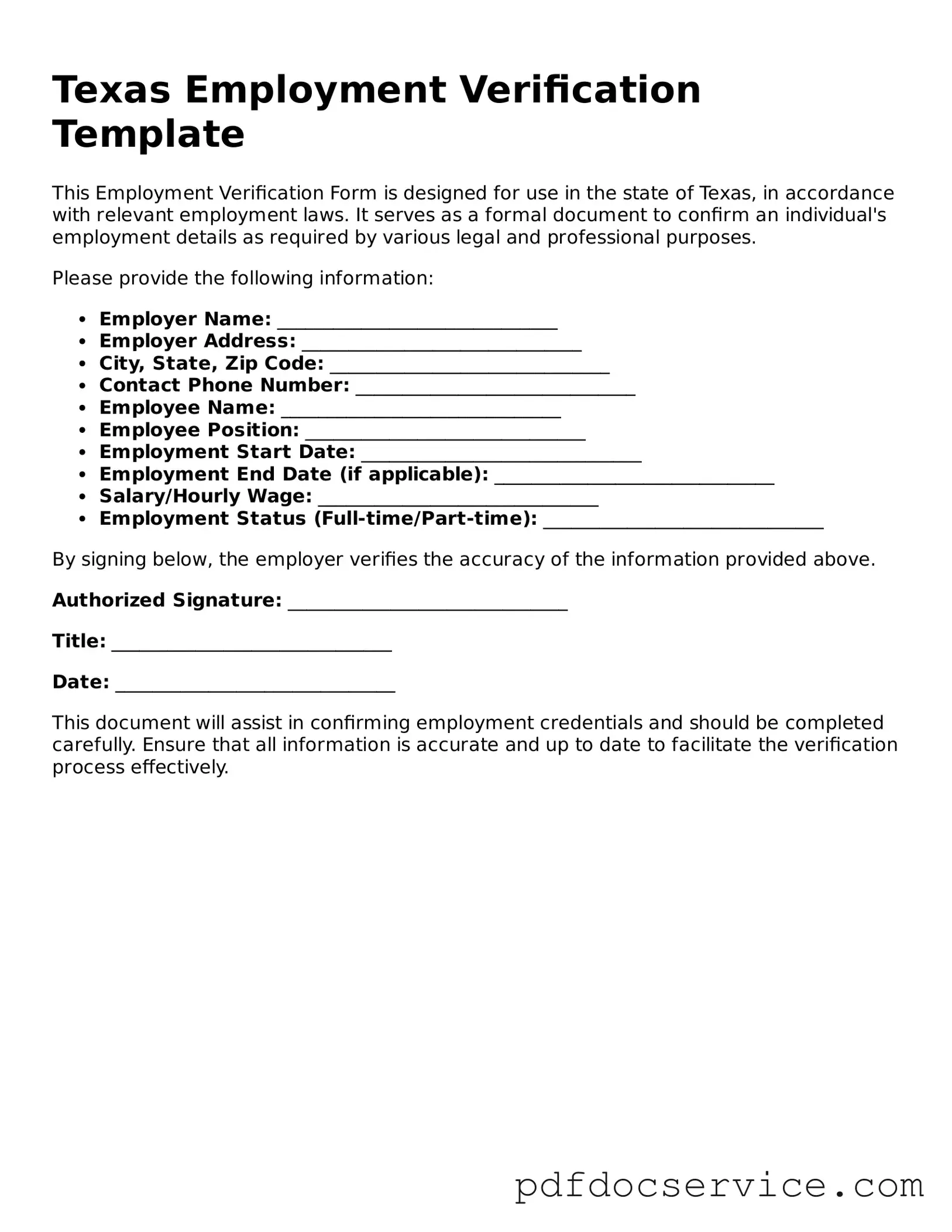The Texas Employment Verification form is a document used to confirm an individual's employment status, job title, and duration of employment with a particular employer in Texas. This form is often requested by lenders, landlords, or other entities requiring proof of income or employment for various purposes, such as applying for loans or rental agreements.
Typically, the form is completed by employers or human resources personnel. However, employees may also need to provide the form to their employer to facilitate the verification process. It is essential for both parties to ensure the information is accurate and complete to avoid any issues during verification.
The Texas Employment Verification form generally requires the following information:
-
Employee's full name
-
Employee's job title
-
Dates of employment (start and end dates)
-
Current employment status (active, terminated, etc.)
-
Employer's contact information
Additional details may be included depending on the specific requirements of the requesting party.
The submission method for the form can vary. Employers may choose to send the completed form via email, fax, or traditional mail, depending on the requester's preference. It is important to ensure that the form is sent securely to protect the employee's personal information.
Generally, there is no fee for completing the Texas Employment Verification form. Employers often provide this service as part of their human resources responsibilities. However, if a third-party service is used to obtain the verification, there may be associated costs.
How long does it take to process the verification?
The processing time for the Texas Employment Verification form can vary. Typically, employers strive to complete the verification within a few business days. However, factors such as the employer's workload or the complexity of the request can affect the timeline. It's advisable to follow up with the employer if there are delays.
If an error is discovered on the Texas Employment Verification form, it is crucial to address it promptly. The employee or employer should contact the party who submitted the form to correct any inaccuracies. Clear communication can help resolve issues quickly and ensure that the correct information is used for verification purposes.
While the primary purpose of the Texas Employment Verification form is to confirm employment status, it may also serve other purposes, such as verifying income for loan applications or rental agreements. However, the form should always be used in compliance with applicable privacy laws and regulations to protect sensitive employee information.
